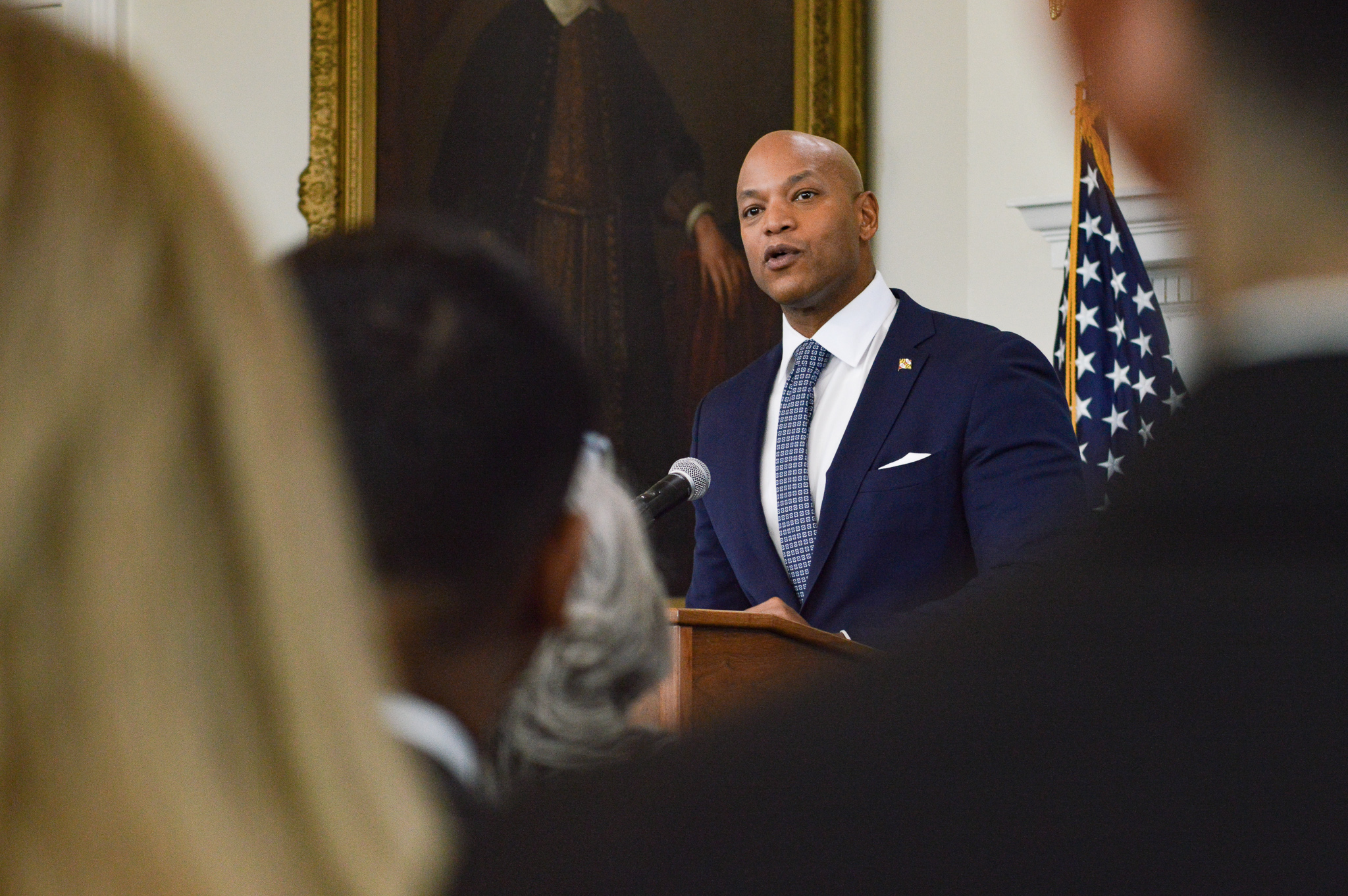ANNAPOLIS – Gov. Wes Moore’s budget proposes redirecting funds originally meant for renewable energy initiatives to help patch the nearly $3 billion budget deficit instead.
If passed as Moore proposed, the budget would allow the state to withdraw $150 million from a special fund that invests in renewable energy initiatives and put it to other uses.
“It’s a lot of money, and we’re not thrilled about having that money taken, but we understand the challenges to the budget,” Kristen Harbeson, the political director for the Maryland League of Conservation Voters, told Capital News Service. “As long as this is a one-year, temporary solution … we do need that money for a lot of programs.”
The League of Conservation Voters commended the budget proposal in a statement earlier this month, highlighting funding set aside for environmental programs and climate action. At a Jan. 17 webinar with the group, Eric Gally, president of Gally Public Affairs, an Annapolis lobbying firm, said he was “very pleasantly surprised, I would actually say shocked, at how well our programs are funded.”
Moore’s 2026 budget plan touts an increase in funds for climate pollution reduction. And, in fact, it would double pollution reduction funds from $90 million last year to $180 million. That money would go to renewable energy initiatives that include solar installations on state property, local solar and geothermal projects, geothermal, and methane capture projects, and renewable energy grants for schools.
But his budget plan also proposes to cut general funding for environmental agencies and replace them with money from special funds, said Harbeson, including the Strategic Energy Investment Fund (SEIF).
This is the same special fund that the budget would draw $150 million from for the general fund.
If the budget is passed, the fund balance by the end of fiscal year 2026 would be nearly $340 million. For impacted environmental agencies, millions of dollars would come from other special funds, like the Chesapeake and Atlantic Coastal Bays 2010 Trust Fund and Program Open Space as well as SEIF.
It’s a change that Harbeson says is not sustainable in the long term.
“It’s not great, but it’s okay for one year,” Harbeson said. “This is fine for this year, but this is not a sustainable option.”
The budget would also allow the governor to move the fund’s interest earnings into the general fund. This is common for special funds, Harbeson said.
SEIF gets most of its funding from programs that raise money to support clean energy and lower greenhouse gas emissions, according to a report from the Maryland Energy Administration. These funds are usually reserved for energy and climate programs at the Maryland Energy Administration and the Department of the Environment, with some money going to other agencies.
But Maryland’s multi-billion dollar deficit is looming over Annapolis this year, putting pressure on the state to close the deficit and boost the economy.
Taking money from trust funds and putting it towards the general fund is “a sign that the economy is not growing at the pace you want it to,” said Adam Dubitsky, the consulting state director of the Maryland Land & Liberty Coalition.
The Department of Environment projects it will need $1 billion annually to meet the state’s climate goals. A 2022 law requires Maryland to reduce its greenhouse gas emissions by 60% by 2031 and reach net-zero emissions by 2045.”
“Our climate spending is still short of where we need to be, and the RENEW Act is how we close the gap,” said Jamie DeMarco, a lobbyist for the Chesapeake Climate Action Network.
That act – the Responding to Emergency Needs from Extreme Weather Act – would establish a new fund and require any company that has emitted more than a billion tons of greenhouse gas emissions since 1994 to pay a one-time fee.
“It doesn’t hurt Maryland. They’re not Maryland-based companies,” Del. David Fraser-Hidalgo, a Democrat representing Montgomery County, said at a committee meeting on Jan. 23. “Exxon, Mobil, BP, Shell – those are the kind of players that we’re talking about that will generate about $900 million, so a total of $9 billion to help with mitigating the issue.”
The $900 million is the estimated amount each eligible company would be required to pay, totaling an estimated $9 billion.
Climate activists would like to see money from the RENEW Act go toward the $1 billion per year needed to meet the state’s climate goals. But health, transportation, education and other programs would be eligible for funding from the RENEW Act.
A fee on coal being transported through the state, called the Coal Clean Up and Asthma Mitigation Fund, could also contribute to that $1 billion goal if passed, Harbeson said. The bill has not been introduced yet.
“Unless Maryland gets, and Annapolis gets their budget under control, starts growing the economy,” Dubitsky said, “we’re not going to have the funds that we need now or in the future for important environmental and energy programs.”

